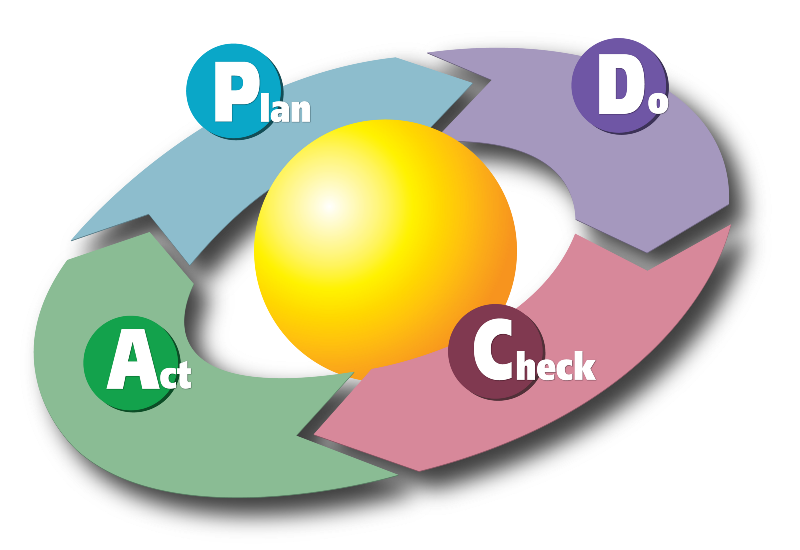Managing change
Change is vital. A business that does not change and innovate does not move forward and will be passed by its competitors. One of the things that makes greats businesses is a very high velocity of innovation. If you stop innovating you simply stay behind. It is hard to change a large company, but sometimes change is rejected in small companies as well.
Why is change so hard on people? Because people prefer the known over the unknown, so change is simply a threat and must be resisted and rejected. On the other hand, if we do not change we will be out of business soon. What can be done to overcome this conflict?

Created by Karn-b — Karn G. Bulsuk. Originally published here released under CC BY-SA 3.0, from Wikimedia Commons
Sara is an engineer in a company, she really likes efficiency. Sara had noticed a business process that takes 5 days to complete and is very manual. She would like to automate the process and thinks it will reduce the time needed for that process to complete to 15 minutes. How can Sara sell this change to others and make sure this change is well received?
Sara starts by mapping the stakeholders, the people that are going to be affected by the change she wants to implement. Sara quickly understand that John, the guy that does the manual work today is likely going to be very resistance to this change. In addition, this change will require work from Anna, a developer that will be tasked with the automation. Sara knows Anna is very busy and will not be happy to spend time on something outside of her core duties. Sara identifies that Yann will be very grateful for such a change as he is the main user of the output of the business process, and he routinely complains the process is so slow.
Sara’s plan of action is to work with Yann to establish why a change si necessary, and prototype the successor of the current process, by writing an automation job to replace it. Sara knows that just popping up with a ready-made automation job will get John and Anna to object her change. She starts by going over to John and speaking with him in order to find out what is his stand on the idea of automation. John might react in two main ways, he can either say he hates the current manual work and is open to change, or fear of becoming redundant and object it. John is not a luddite, he just shares a genuine fear and needs to be assured he is not going to be replaced by a machine. Sara understands this and prepares John a short term plan by asking him to train the automation with data, and a longer term plan of introducing him to the world of automation where he will be writing automation for business processes himself.
Sara now thinks how to get some of Anna’s precious time. She knows Anna loves interesting research and cool technology, so she thinks how to sell Anna the idea so it will interest her enough to join. Sara comes to a conclusion that the best way to get Anna’s buy-in is by offering her to do the development her way from A to Z. Sara speaks to Anna and convinces her the change is important and offers her to lead the automation project.
Sara understands how to push a change in an organization. She knows you need to identify and work with stakeholders, and build a coalition to vouch for the change. But this is not enough, now that Sara has the support of her coworkers she also needs to sell the idea to her management, not always, but sometimes. In order to do that she agrees with Anna to develop the prototype and present a demo of it to John’s and Yann’s bosses. After a few days of development, supported by Anna’s Boss, they have a working prototype. Anna wants to present it right away, but Sara insists it is not ready yet. After some debate they agree to polish it a bit more. Sara explains the reasoning as showing a broken demo only hurts your point and does not help you sell. This convinces Anna.
Sara builds the presentation for the demo, and understands the change might come hard on some people, merely because it is a change, and also wants to reduce the risk of her change going wrong. As a result Sara plans a rollout plan where the current process and the new automated one will run in parallel for a few weeks to verify that the outputs are identical and no regression from current output is introduced as part of the change.
On demo day Anna’s code works flawlessly and the gradual rollout plan outlined by Sara is well received. They both start rolling out the change, having John support them throughout the change process. After several weeks the new code is fully rolled out and considered a huge success. John moves to work with Anna in automation development.
Why was this change so successful? There are a few key points her.
- Identify your stakeholders
- Build a coalition with all the stakeholders
- Sell your idea
- Build a prototype presenting your change, make sure it is flawless
- Plan a gradual rollout of your change
- Check your assumptions and results frequently in order to verify you are still on track
Those points outlined above might take several hours to several years in very complicated changes, but the key in every change you want to lead is to build trust with all the people involved. If you have toxicity among the people affected by the change it will be somewhere between very hard to impossible to make the desired change.
Go innovate!